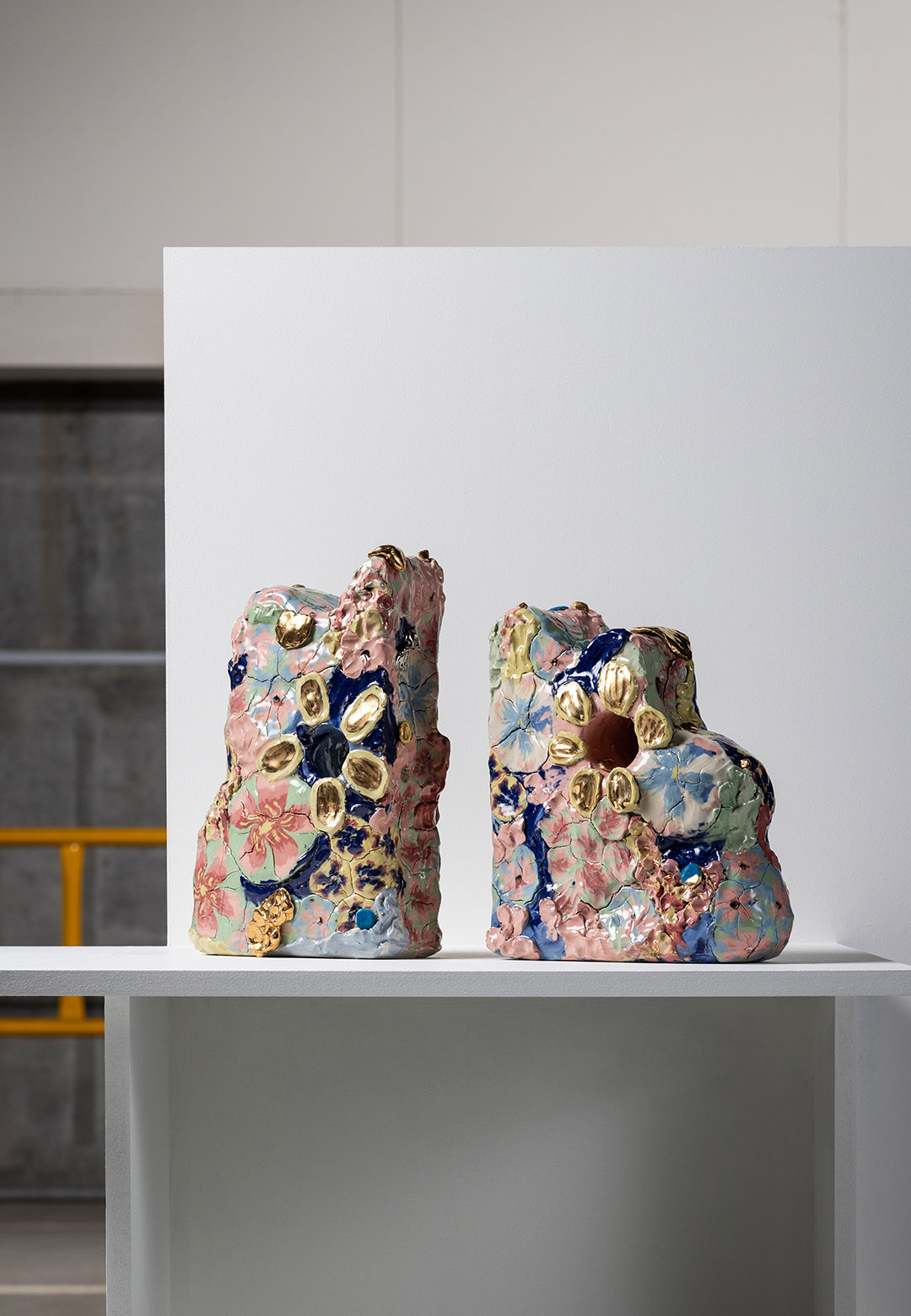The world of literature, whether rooted in real-life incidents or fantasised by authors, holds within its narrative, the descriptions of disparate details, as witnessed in the vividly adorned world around us. These descriptions—about textures, colours, landscapes, streets and buildings, but also cultures, people and events—bear the potential of emblazoning one's imagination with evocative images. However, positioned on mundanely construed shelves, with only their spines visible, one may forget that these books have a lot of say—as impassionately expressed by erstwhile Indian playwright Safdar Hashmi in his poem Kitabein Kuch Kehna Chahti Hain (Books Have Something to Say)—about bygone times, about the world and its people, about today and tomorrow, joy and sadness, wins and losses, nature and science and the indomitable universe.
It is in respect of such narratives that are hidden within books, that a recent exhibition in Dundee, Scotland, hosted 20 bookends, the designs of which were inspired by disparate visions from the world over. The 20 bookends, designed bearing the distinct marks of their creators, allude to the diverse and vivid worlds held within books. Part of the Dundee Design Festival 2024, the design exhibition titled Bookends, was on view from September 23 - 29, 2024. It also marked 10 years of Dundee as a UNESCO City of Design and 20 years of Edinburgh as a UNESCO City of Literature.
For the design event, 20 Scottish designers were invited by Dr Stacey Hunter, the curator and creative director of the Dundee Design Festival, to respond to the 'inspirational story of Dundee's pioneering journalists Isabella 'Marie' Imandt and Bessie Maxwell who were assigned by DC Thomson to travel the world 130 years ago'. The culminating designs presented at the design festival encapsulated disparate tales, as a reflection of the lands, cultures, colours and details that were observed by Imandt and Maxwell during their journey and penned down in Dundee's Two Intrepid Ladies: A Tour Round the World by D C Thomson’s Female Journalists in 1894.
Resembling a stack of books, Adam Johnston's A Material Library of Scotland was construed in six native materials, celebrating Scotland's natural resources. On the other hand, Akiko Matsuda's Beyond bookend was a circular piece made using clay from Japan and the UK, countries that the designer has lived in and which were also visited and traversed by Imandt and Maxwell. "These paired ring-shaped bookends symbolise the two women's growth as they travelled across the globe," Matsuda observed. Alistair Byars of GRAS designed the sandcast bronze bookend Ceremonial Weights, inspired by the rich material beauty held in the description—of the book—of a dinner party in Tokyo and Aymeric Renoud's Stack, reflects the layers of encounters and discoveries made by the two writers.
Adorned with a wavy edge, Camillo Atlas' abstractly formed interdependence is inspired by a passage in the book where the journalists refused any help from the men in the vicinity while climbing a camel's back in Egypt. "This to me became a metaphor for women's struggle in a men-dominated world and their ability to stand up for themselves," Atlas shares, delineating how the two pieces depict the two women. Made using waste materials, it illustrated the key focus levied on sustainability within the brief.
Similarly, Kate Trouw's Union bookends were made using repurposed waste materials and those responsibly sourced through sustainable harvesting methods. "This approach mirrors the Scottish ideals of frugality, resourcefulness and innovation and emphasises the transformative potential of design and designers in the context of the climate crisis," Trouw explains. Ten shores by Granite + Smoke was similarly put together using recycled textile waste from UK factories and jesmonite, and depicts with the usage of different colours, the various aspects explored by the writers such as culture, art, fashion, architecture, transportation, politics of the time and location.
In line with Atlas' piece are Juli Bolaños-Durman's Possibilities of Enjoyment and Jennifer Gray's World at her Fingertips, both celebrating women and their experiences. The former is derived from the observations made by the writers about women from different regions and the latter abstractly exemplifies the experiences of Imandt and Maxwell on their travels.
Reflecting the vibrancy of Maxwell and Imandt's descriptions, Ciara Isabel Neufeldt's bookend referenced the colours, clothing, floral patterns and embellishments discovered and described in the book. Other bookends that reflected the vibrant traditions and customs around the world, as described in the book, included Lauren Morsley's animated bookend Wonder; Stefanie Yin Lin Cheong's Stories, Rocks, Colours, Markers depicting 10 countries visited by the journalists with corresponding colours; and James Rigler's Foreign Objects, which referenced the descriptions of exotic sights in the book.
Steven Blench of Chalk Plaster conceived HB Graphite in a stoic mien using composite graphite, which linked to writing and literature. Louise Forbes Design's For Books not Buildings, made of Reinforced Autoclaved Aerated Concrete (RAAC) and black walnut, exemplified the impermanence of things in life, with the usage of the now obsolete material RAAC. With Pantograph, Marc Sweeney paid homage to the passage in the book that describes Imandt and Maxwell visiting a sculpture studio in Florence and witnessing small holes being bored into a block of marble to build a pantograph. Meanwhile, Past hopes for the future by Nicholas Denney referenced the sacred architecture of natural landscapes with its dramatic curves.
Artefact #14 by Nick Ross looked at Scotland's historical and contemporary connection with sandstone. "As someone that has moved away from Scotland, I wanted to create something that referenced an idea of 'home' rather than travel," commented Ross, on his inverted response to the brief. Braiding Sisterhood by Soorin Shin of Wobbly Digital, contrarily, illustrated the theme of sisterhood through braids. Lastly, MULGREW's Multi-Functional-Useless-Object, shaped more like a sculpture and less like a bookend, was described by the designer as a 'bookless bookend' or bookends that are not reliant on books, triggering a reflection on the form vs function trope and the functional vs decorative argument. Reflective of versatile narratives and usages, this bookend fulfils many functions and exhibits an ubiquitous quality.
'Bookends' was on view from September 23 - 29, 2024, during the Dundee Design Festival at the Michelin Scotland Innovation Parc in Dundee, Scotland.






 Sign in with email
Sign in with email










What do you think?